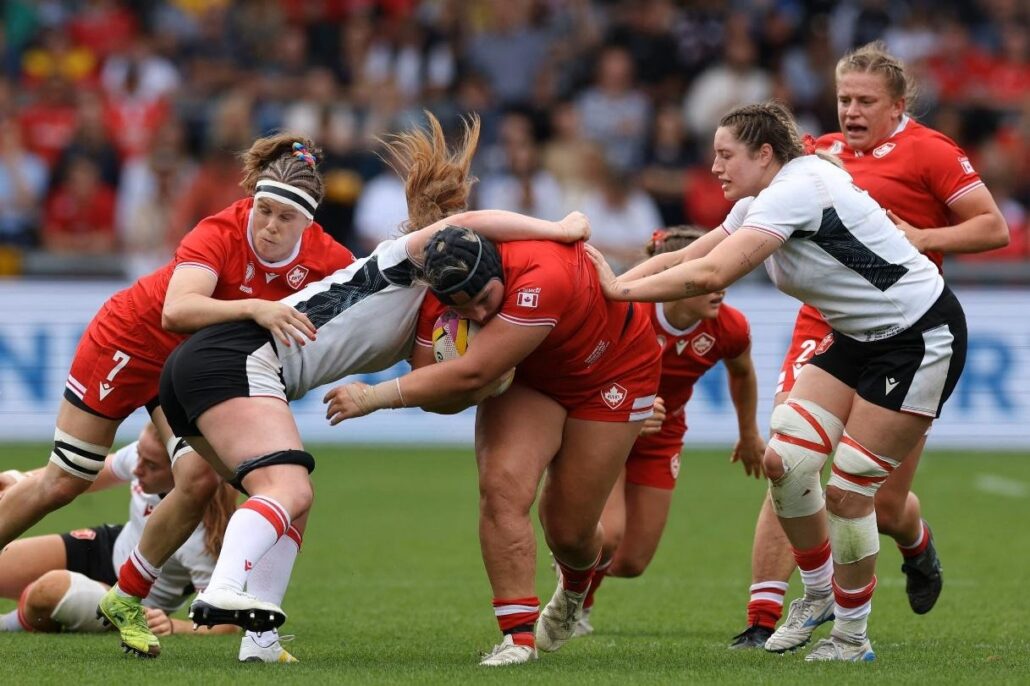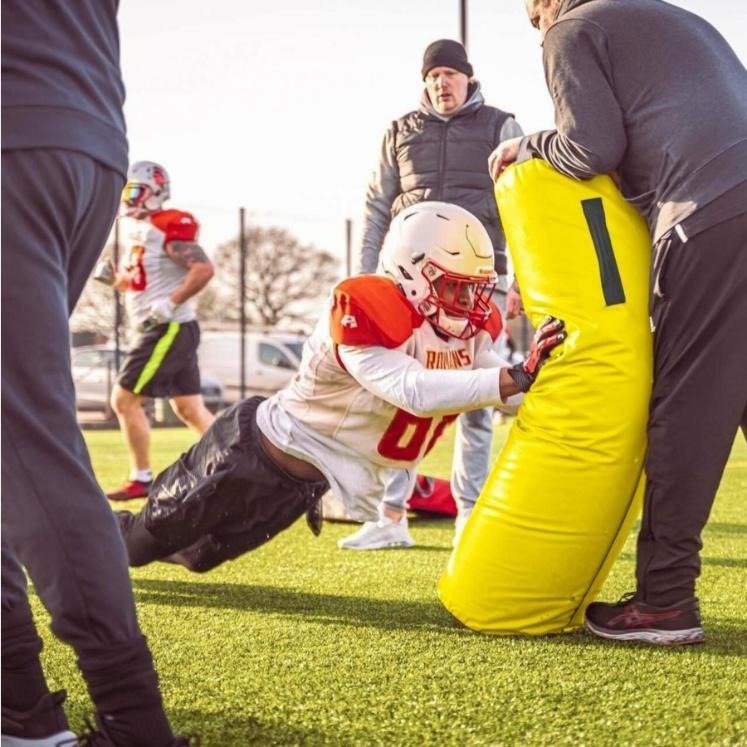The Contact Continuum: Considerations, Targets, and Structure
The 2025 Women’s Rugby World Cup Final was played just a month ago in front of record-breaking crowds, and Canada’s dominance through the tournament reflects the rise in contact sport participation in Canada². As good as it feels to break a tackle or slip past a hard check, we know it doesn’t always go according to script. Whether it’s an ankle knock, a shoulder issue, or even a concussion, we’re here to make sure you have a concrete plan to get back on your feet efficiently and safely.
Contact Considerations
It goes without saying – contact is complicated! Regardless of the sport, entering contact is technical and requires a careful combination of learned skill and physical force¹⋅³. When breakdowns in these areas occur, injury risk can increase—which might mean you’re checking in with our team sooner than you may have expected.
A physiotherapy initial assessment will gather information regarding your injury and will test different structures depending on the nature of your injury. This helps us understand the severity of your injury and determines where the recovery starting line is. Remember, this is a team effort! An effective recovery plan is a collaborative effort between the therapist and you – there are no cookie-cutter rehab programs here.
I’m Out of Pain – Now What?
Stepping back on the training pitch can feel daunting, but this is where a structured rehab approach really shines. There’s a fine balance to keep: too aggressive and we risk re-injury, but being too cautious can lead to unnecessary delays. Your physiotherapist will work with you to determine your specific training targets depending on your injury and sport demands to make sure you get back to training safely, efficiently, and confidently, which could look like the example below.
Sample Return to Contact Progression
In-clinic Testing
– Indicated by the type of injury, your physiotherapist may test for limb strength asymmetries, muscular/cardiovascular endurance, reaction time, and/or sport-specific balance.
Non-contact training
– Individual or team training focused on technical skills at an increased intensity without contact. Typically completed without protective equipment to encourage a focus on technical quality without the “autopilot” contact focus to build confidence on-feet.
Contact Exposure – Pads
– Team training where contact is initiated by you against a tackle bag or foam cushion. Specifically non-person contact to build confidence and dose intensity appropriately. This session may also include you receiving contact from these tackle bags, but not directly from other players.
Contact Exposure – People
– Team training with individual drills where you give and receive contact to/from other players in controlled drills. This is typically submaximal at a “training intensity”.
Contact Exposure – Match Simulation
– Team training at full match intensity with full contact in short durations. This typically starts with controlled drills and should progress to unstructured or unplanned reactionary match situations.
Match Play
– A reduced-minutes return to match exposure.
Return To Play Monitoring
Stepping back into the matchday squad is an exhilarating feeling, but this doesn’t mean you’re being thrown back without support. Your physiotherapist will continue to modify your Return To Play structure as needed in collaboration with your coaching staff and yourself to make sure the last pieces of the rehab puzzle go according to plan. There should be a smooth handoff from your rehab team back to your performance team, and you can continue check-ins with your physiotherapist through this process as needed.
Taken a knock and looking to get back on your feet? Come by for a chat and let’s get started!
Written by: Ben Dyck
References:
- Martin, E., Beckham, G. Force production during the sustained phase of Rugby scrums: a systematic literature review. BMC Sports Sci Med Rehabil 12, 33 (2020). https://doi.org/10.1186/s13102-020-00174-z
- Sport Participation Among Children and Youth. Canadian Fitness and Lifestyle Research Institute. (2024, June 25). https://cflri.ca/publication/sport-participation-among-children-and-youth/
- Trewartha, G, Preatoni, E, England, ME & Stokes, KA 2015, ‘Injury and biomechanical perspectives on the rugby scrum: a review of the literature’, British Journal of Sports Medicine, vol. 49, no. 7, pp. 425-433. https://doi.org/10.1136/bjsports-2013-092972
- Image 1: Adrian Dennis AFP
- Image 2: Networld Sports



